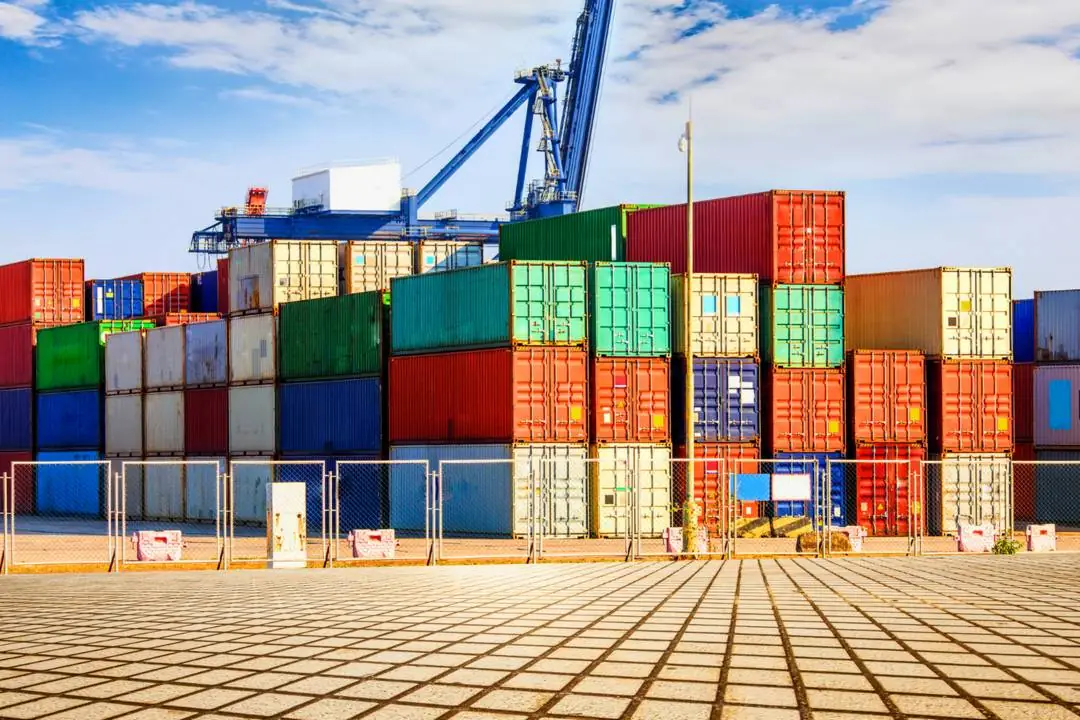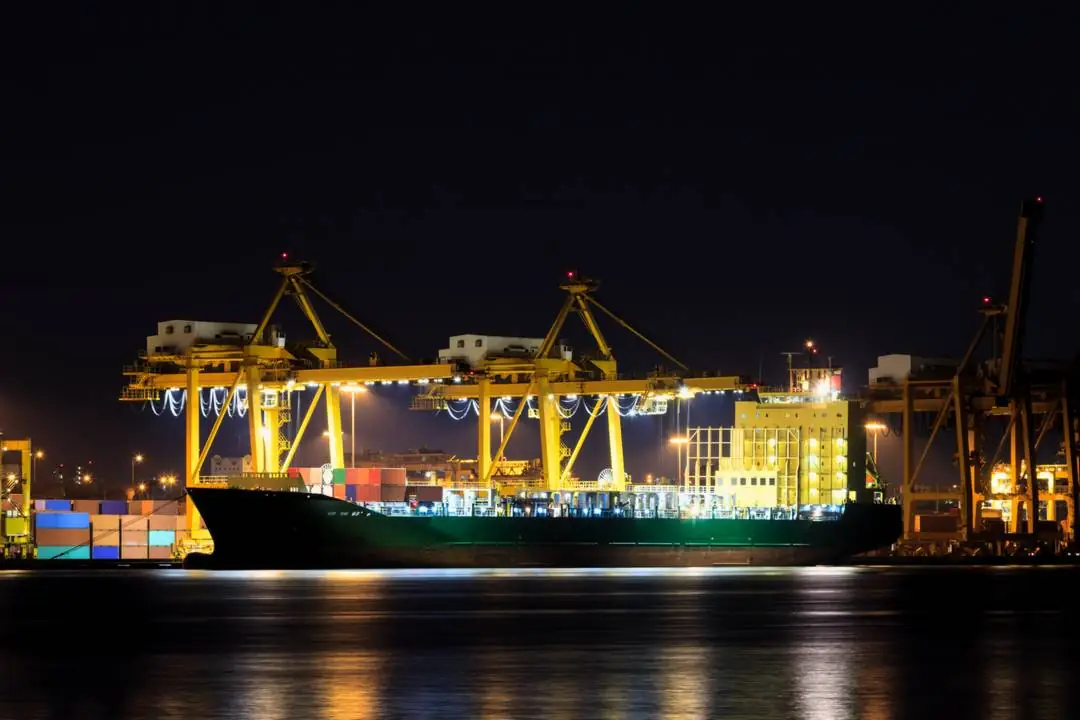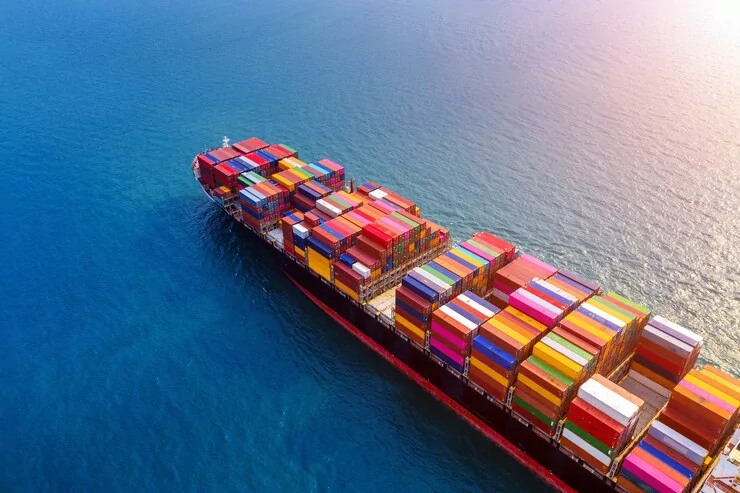Do you know what it is, how it works and what the difference is between importing on account and importing to order?
Importing is an important strategy for companies seeking products, technologies and raw materials from the international market.
Within this context, the modalities of import on account and import to order have emerged as strategic alternatives to optimize the process, reduce costs and meet legal and logistical demands.
Although the two modalities facilitate the entry of goods into Brazil, they have marked differences in terms of responsibility, parameters of taxation in foreign trade and operation.
That's why understanding how each one works, its benefits and challenges, is essential for companies wishing to choose the most suitable option for their needs.
Therefore, in this article, we will explain in detail what it is import on accountand what is import to orderhighlighting its characteristics, advantages, requirements, procedures and precautions.
What is import on account?
A import on account is a type of foreign trade operation in which a company (acquirer) hires a company specializing in imports (importer) to carry out the entire process of acquiring and nationalizing products from abroad.
This operation is governed by RFB Normative Instruction 1861/2018 of the Brazilian Federal Revenue Service, which establishes all the requirements and obligations for this type of import.
In practice, we can say that the buyer is the true owner of the goods from the start of the operation. They are responsible for deciding what will be imported, negotiating with the international supplier and bearing all the costs involved.
The importer, on the other hand, only acts as a service provider, intermediating and carrying out the bureaucratic, logistical and customs procedures necessary to bring the goods to Brazil.
Characteristics of importing on account
Relationship between buyer and importerThe buyer hires the importer to carry out the operation on his behalf, but retains full control over the goods.
Ownership of goods: The buyer is the owner from the start of the transaction, even during transportation and customs clearance.
Tax liability: The purchaser is responsible for paying taxes and complying with ancillary obligations.
Are imports on behalf of third parties and imports on behalf of third parties the same thing?
Although the terms "import on account" e "import on behalf of third parties" are used interchangeably, in practice they refer to the same type of operation in the legal and fiscal context of Brazil.
Confusion often arises because of the way companies and foreign trade professionals call this modality.
The expression "third party" emphasizes that the operation is carried out by the importer on behalf of another company, called buyerwho is the real owner of the goods.
In practice, this means that the importer only acts as an intermediary to carry out import-related processes, such as:
- Negotiation with international suppliers (if requested).
- Transportation and customs clearance.
- Compliance with customs and tax obligations.
The term "third party" only reinforces the fact that the importer is not the owner of the goods, but the service provider.
Benefits of importing on account
Import on account is a method widely used by companies that want to bring goods from abroad but prefer to outsource the entire bureaucratic and logistical process.
Check out the main benefits:
1. reducing operating costs:
- The acquiring company does not need to invest in infrastructure or expertise to carry out the import process directly.
2. expertise in the import process:
- Specialized import companies have experience in managing international procedures, from negotiating with suppliers to customs clearance.
3. focus on core business:
- By outsourcing the import, the buyer can concentrate its resources and efforts on activities that are essential to its business, such as sales, marketing or product development, while the importer takes care of the international operation.
4. greater access to the international market:
- Small and medium-sized companies, which often have no experience in importing, can access global suppliers without having to master all the details of foreign trade.
5. reducing tax and customs risks:
- With the support of experts, the risk of errors that could lead to import fines or other sanctions is significantly reduced.
6. tax planning:
- Importing on account can be used as a tax planning strategy. With proper analysis, it is possible to identify tax regimes and incentives that reduce the tax burden on the operation.
To sum up, we can say that importing on account offers a powerful combination of efficiency, economy and security for companies wishing to
Requirements and procedure for importing on account
As we saw earlier, importation on account and to order is a form of foreign trade regulated by the RFB Normative Instruction No. 1,861/2018This allows one company (acquirer) to hire another (importer) to carry out all the import stages.
However, in order to operate legally and efficiently under this regime, a number of technical, operational and documentary requirements must be met.
1. registration with RADAR Siscomex: Both parties involved - the acquiring company and the importing company - must be registered with RADAR, which is the system used by the Federal Revenue Service to monitor foreign trade operations.
2. Contract between the parties: A service contract must be signed between the buyer and the importer, clearly specifying the terms of the operation, such as:
- Services to be provided.
- Amounts charged.
- Responsibilities of each party.
This contract serves as a legal basis and can be requested by the IRS during inspections.
3. direct payment to the foreign supplier: When importing on account, payment to the foreign supplier must be made directly by the buyer.
In practice, this differentiates it from importing to order, where the importer is responsible for payment.
4. Compliance with customs and tax rules: It is essential to follow the tax classification rules, describe the goods in detail and correctly calculate the taxes levied.
5. registration of the operation in Siscomex: The importer must register the Import Declaration (DI) with Siscomex, ensuring that all the information is correct and in accordance with the contract signed.
6. issuing the bill of lading and documentation: The supplier will send the essential documents for the import, such as:
- Bill of lading (BL or AWB).
- Commercial invoice (Invoice).
- Packing list.
These documents are handed over to the importer to carry out the legal procedures.
7. registration of the import declaration (DI): The importer registers the Import Declaration (DI) on Siscomex, giving all the details about the goods and the parties involved.
- The importer must mention that the operation is carried out on behalf of a third party.
- The buyer's details must be duly registered.
8. Customs clearance: Once the DI has been registered, the IRS carries out a document analysis and, if everything is in order, customs clearance is authorized.
- The importer is responsible for monitoring the process and dealing with any tax or customs requirements.
Cautions when importing on account
A import on account is an interesting option, but one that requires special attention at every stage to avoid mistakes that could lead to additional costs or legal complications.
When dealing with this model, both the acquiring company and the importer must meet regulatory requirements and ensure compliance with Brazilian laws. Check out the main precautions to be taken:
1. well-structured contract: A formal contract between the buyer and the importer is mandatory and must include:
- Details of the operation, such as the type of goods and deadlines.
- Responsibilities on both sides.
- Financial aspects, such as fees and payment methods.
This document is essential to avoid conflicts and prove the legality of the operation before the IRS.
2. prior notification to the Federal Revenue Service: It is essential that the acquirer clearly informs the IRS that the transaction will be carried out on behalf of the buyer.
Failure to do so can result in tax penalties and import blocks.
3. legality of the importer and purchaser: Both companies involved must:
- Be qualified in RADAR Siscomex.
- Have active registration and no pending issues with the IRS.
- Present fiscal and documentary regularity.
4. payment of taxes and costs: Taxes and charges related to imports, such as II, IPI, PIS/COFINS and ICMS, must be correctly calculated and paid. This is essential:
- Check the applicable tax rates and benefits.
- Ensure that values are clearly passed on to the buyer.
5. documentation control: Keeping documents organized is essential for audits and inspections. This includes:
- Contract between the parties.
- Import Declaration (DI).
- Bill of lading (BL or AWB).
- Invoices and proof of payment.
6. choosing reliable partners: The importer must be experienced and reliable, with the technical knowledge to deal with customs and tax procedures. Therefore:
- Make sure that the customs agent involved is qualified.
- Check the importer's reputation on the market.
Taking care when importing on account guarantees not only the efficiency of the process, but also avoids tax, financial and legal problems.
Investing in detailed planning and relying on expert advice are indispensable steps for the success of this modality.
What is import to order?
A import to order is a type of import in which an importing company buys goods abroad with its own resources, meeting a demand previously established by an acquiring company, known as the orderer.
In this model, the importer assumes the risks and initial responsibility for the operation, but already has a contract or commitment signed with the ordering party for the future sale of the product on the domestic market.
Characteristics of importing to order
The importer's own resources: The importer uses its own financial resources to acquire and nationalize the goods, unlike imports on account and to order, in which the buyer directly finances the operation.
Subsequent sale to the ordering company: After nationalization, the importer transfers the goods to the ordering company, fulfilling the commercial agreement previously established.
This sale takes place by issuing an invoice, which includes the import costs and the importer's profit margin.
Registration with the Internal Revenue Service: The Federal Revenue Service requires both companies to be registered with RADAR Siscomex and for the Import Declaration (DI) to state that the operation is being carried out as a custom import.
Conditions for importing to order
A import to order follows specific rules established by Brazilian legislation.
In order to carry out this type of operation, both the importing company and the ordering company need to comply with requirements and meet certain conditions to guarantee the regularity of the operation.
Below are the main conditions:
1. Qualification for RADAR Siscomex: Both the importer and the ordering company must be authorized in the system RADAR Siscomex (Integrated Foreign Trade System) of the Federal Revenue Service.
This authorization allows import operations to be registered and monitored, guaranteeing transparency in the process.
2. formal contract between the parties: There must be a previously established contract between the importing company and the ordering company, defining:
- The importer's responsibility to finance the operation.
- The obligation to transfer the products to the ordering company after nationalization.
- Price conditions, payment terms and any guarantees.
3. registration of the operation on the import declaration (DI): When registering the Import Declaration (DI), it is compulsory to state that the operation is being carried out as a custom import.
4. use of the importer's own resources: The importer must exclusively use its financial resources to acquire the goods abroad, nationalize them and bear the costs of freight, insurance and related taxes.
This requirement is essential to differentiate between importing to order and importing on account.
5.Transfer to the ordering company after nationalization: Once nationalized, the products must be transferred to the ordering company, as established in the contract.
The transfer takes place by issuing an invoice, which includes the import costs and the importer's profit margin.
Benefits of importing to order
A import to order is a form of foreign trade that offers advantages for companies wishing to acquire imported products without directly taking on the bureaucratic and financial aspects of the process. Check it out!
1) Reduced bureaucracy for the ordering company:
- When importing to order, the importing company is responsible for managing the processes related to the purchase, transport, customs clearance and nationalization of the goods.
- As a result, the ordering company can focus on its core activities without having to deal directly with bureaucratic complexities.
2. expertise in foreign trade:
The importer has technical knowledge and experience in international operations, which guarantees:
- Compliance with foreign trade regulations.
- Negotiating better commercial conditions with foreign suppliers.
- Reduction of errors that could lead to fines or delays.
3. financial optimization:
In this model, the importer uses its own financial resources to purchase the products and pay the taxes, allowing the ordering company to do so:
- Preserving your working capital.
- Plan for more flexible payment terms.
In addition, the ordering company can avoid the need to qualify for RADAR Siscomex with high financial limits.
4. reducing operational risks and costs:
The importer assumes risks such as:
- International logistics.
- Any problems with the tax classification of goods.
- Costs related to customs clearance.
This reduces operating costs and financial risks for the ordering company.
5. agility in the process
The importer already has connections with carriersThis speeds up the import process, reducing deadlines and facilitating the delivery of nationalized goods to the ordering company.
How importing to order works
A import to order is an import model in which a company (ordering party) requests the purchase of products from another country, but another company (importer) carries out the entire import process, including the bureaucracy and logistics.
This type of operation facilitates the entry of goods into the domestic market without the ordering company having to deal directly with the more complex aspects of importing.
Here's how this type of import works in practice:
1. Negotiation with the importer: The process begins with the ordering company negotiating with the importer.
The ordering company, which can be a company or even an end consumer, chooses the products it wishes to import and formalizes the order with the importer.
The importer, who has the experience and the necessary infrastructure, takes care of all the operations.
2 Formalizing the purchase order: The importer buys the products abroad at the request of the ordering company.
In practice, this includes contracting foreign suppliers, agreeing commercial terms (price, deadlines, quantity, etc.) and paying for the product.
At this point, the importer also takes care of all the international legal and customs requirements.
3. international transportation: After the purchase, the importer coordinates the international transportation of the goods, which involves choosing the shipping method and contracting the services of an international carrier.
4. customs clearance: When it arrives in Brazil, the importer carries out customs clearance, i.e. the process of regularizing the goods with the Federal Revenue Service.
In practice, this includes paying import taxes (II, IPI, ICMS, etc.) and checking the documentation required for the products to legally enter national territory.
5 Storage and nationalization: After clearance, the goods are delivered to the importer's warehouse for nationalization.
The importer can also distribute the product to the ordering company or pass it on to the end buyer, depending on the conditions agreed.
Custom import contract
O import contract to order is a formal agreement between two parties: the ordering party and the importer.
This type of contract establishes the conditions under which the goods will be purchased, transported and delivered, as well as defining the responsibilities, rights and duties of both parties involved in the process.
Among the main pieces of information that need to be included in a contract of this nature, we can highlight the following:
- Details of the contractor and the contracted party;
- Object of the contract signed;
- Responsibilities of the parties;
- Price and payment terms;
- Delivery time for goods;
- Guarantees and liability for damages;
- Customs and clearance aspects;
- Tax obligations;
- Confidentiality;
- Termination of contract;
- Jurisdiction and venue.
One import contract to order is an essential tool to ensure that all stages of the import process are carried out clearly and safely for both parties.
By including all the conditions, responsibilities and rights of the parties involved, the contract minimizes the risk of disputes and establishes a legal commitment that fosters trust between the ordering party and the importer.
Comparison between import on account and import to order
Importation on account and importation to order are customs procedures that allow goods to be imported with the support of third parties.
Although they share some characteristics, there are important differences between the options.
So, to make it easier for you to understand, we've prepared a table comparing the models, but first consider the following:
- Import on account:
The importer acts as an intermediary for the buyer, i.e. it carries out the import on behalf of a previously contracted company. The buyer is responsible for all costs and risks.
- Import to order
The importer buys the goods in its own name and, after nationalization, sells them to the ordering party. In this case, the initial risks fall on the importer.
| IMPORT ON ACCOUNT | IMPORT TO ORDER | |
|---|---|---|
| Operation control | The buyer has greater control over the process, from negotiation to final delivery. | The ordering client delegates the entire operation to the importer, simplifying their involvement. |
| Tax transparency | Taxes are paid directly by the buyer, ensuring greater clarity about tax costs. | The importer concentrates the tax costs until resale, making the flow easier for the orderer. |
| Reduction of intermediate costs | Lower administrative costs for the buyer, as the goods are imported directly to them. | The customer does not have to manage the logistics process, saving time and operational effort. |
| Tax compliance | It can be more fiscally advantageous for companies that can manage the tax burden directly. | Ideal for companies that prefer to pass on import tax charges to the importer. |
| Contractual flexibility | The buyer can negotiate directly with foreign suppliers, increasing its bargaining power. | The importer negotiates with suppliers, reducing the need for expertise on the part of the ordering party. |
| Documentary complexity | Requires greater interaction and documentation on the part of the buyer. | The client does not have full control over the agreements made by the importer with foreign suppliers. |
| Tax liability | The buyer is directly responsible for taxes and possible tax errors. | Taxation on resale can be more onerous due to the incidence of additional taxes. |
| Operational risk | The buyer assumes the risks associated with the purchase and transportation from origin to final destination. | The importer assumes the commercial risk until the sale, which can generate additional costs in the final pricing. |
| Autonomy of the importer | It depends on a very close relationship with the importer to ensure that operations are conducted as agreed. | The importer has complete autonomy, which can limit the client's influence over the operation. |
| Total cost of operation | It can be more expensive in situations where the acquirer does not have the internal structure to manage the processes. | The total cost is higher due to the margin applied by the importer when reselling to the orderer. |
Conclusion
Both importing on account and importing to order are interesting tools, but they should be chosen according to the importer's profile and needs.
Companies that prioritize control and savings tend to opt for account and order, while those looking for simplicity and convenience find order the ideal solution.
Assessing tax, operational and financial requirements is fundamental to making the decision that is most in line with business objectives.
If you are looking for a accounting for foreign trade that is prepared to offer all the tax and accounting support your company needs, contact us!





